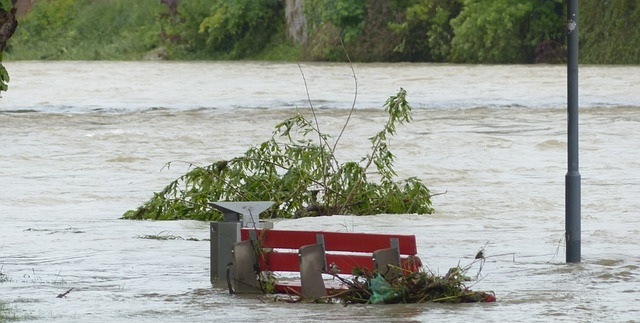Introduction:
The monsoon season continues to cause problems in various regions in Pakistan, generating floods, flash floods, and other severe weather-related catastrophes, as well as increasing humanitarian needs. According to the National Disaster Management Authority (NDMA), up to 147 fatalities have been recorded throughout the country as of 11 July,2022. More than 1000 dwellings have been damaged or destroyed, as well as five bridges and road sections. National authorities are assisting the most vulnerable citizens. Such unfortunate loss of lives and damage to property and infrastructure has been seen throughout Pakistan.
You might also read: Monsoon Season of Pakistan – Importance and Problems
The first part of the monsoon season runs from July 1 to mid-August and is projected to be wetter than the second phase, which runs from mid-August to September. Extreme hydro-meteorological occurrences across catchment regions cannot be ruled out during the monsoon, which may cause riverine floods in major rivers. Heavy rains may cause flash floods in mountainous places and urban flooding in plain areas, including major cities in Sindh, Punjab, Kashmir, and Khyber Pakhtunkhwa.
Above-normal temperatures at high elevations are anticipated to accelerate snow-melt in the Northern Areas, resulting in base flow in the upper Indus basin. Sindh saw seven spells of moderate to heavy rainfall during monsoon. Several districts in Sindh were impacted by the severe rains, including Karachi, Hyderabad, Dadu, Larkana, , Sukkur, , Thatta, Badin, Tharparkar and Jacobabad etc.
Also check out: Karachi Monsoon Urban Flash Flooding – Causes and Impacts
Here are some suggestions to prevent Pakistan’s hazardous monsoon season flooding and the consequent damage caused by it every year, including both what the government can do and what the people can do on individual level.
What the Government and City Administration Can Do To Prevent Monsoon Rain Flooding?
1. Clean Storm Drains
Storm drains are exactly what they sound like: drains that channel excess water. Over time, these drains can become blocked with leaves, garbage, and other material, preventing water from draining correctly. Make sure your storm drains are clear of debris so that water may drain easily.
2. Storage tank arrangement:
Building bye-laws for government buildings and large corporate structures should not be allowed to throw rainwater on roads but arrange for water storage tanks for RWH (Rainwater Harvesting System). Proper rainwater harvesting on a larger scale need to be adopted by the government in all cities of Pakistan, as it was made in certain places in Lahore. This will help in not only preventing urban flooding but also help in recharging ground water. For more information, read: Rainwater Harvesting Project Lahore – Why We Need More?
3. Tree Planting
Government needs to initiate more urban and rural tree planting program as the benefits of trees in preventing flooding and landslides etc are well-known. You may like to view Pakistan 10 Billion Tree Tsunami Impact – Before and After Pictures.
4. Dam Construction
Dams – both small-scale and large scale – need to be constructed to store excess water and prevent flooding.
5. Practical and Implementable Disaster Management Plan
Disaster Management Authority need to have a practical and implementable Disaster Management Plan to deal with any such disastrous situation. Such as plan should be made and implemented before the monsoon begins, as disaster prevention is very important.
You may also like to read: Effects of Climate Change on Monsoon Season of Pakistan
6. Arrange Dewatering Pumps and Similar Machinery
Government should have a ready supply of dewatering pumps and similar machinery that is used for draining water from roads and buildings etc. so that water can be drained from these places as soon as possible after a heavy rain.
7. Weather Warnings
Government should make sure to issue proper weather warning as well as travel warning to people in case of a weather forecast with heavy rainfall event. Public holidays should be announced on days when there is heavy rainfall as nothing is more important that human life – people can always work from home and students can always study online.
Also read: Landslides and Rockfall – Causes, Effects, and Prevention
What the People On Individual Level Can Do To Prevent Monsoon Rain Flooding?
1. Check Your Drains
It’s not simply your gutters that need to be cleaned. Make sure that any exterior drains in your property (such as those located on balconies or below-grade doorways) are clean of rubbish. While there is normally no risk of foundation damage, if these drains get clogged, water may back up and enter the property.
2. Check Your Roof
Check the condition of your roof before the weather shifts. Shingles that are worn or twisted might fracture, enabling rainwater to enter your home. If you’re afraid of heights, get a professional roofer and pay for an inspection. Not only will they point out any concerns with your roof that you should solve before winter, but they should also be able to offer you an estimate of your roof’s remaining lifetime and the cost of replacement. It’s also worth remembering that most house insurance policies cover unexpected roof damage (for instance, during a storm). However, normal wear and tear is often omitted.
Also read: 10 Easy Ways To Store And Use Rainwater In Your House
3. Clear Your Gutters And Downspouts
Gutters and downspouts move water away from your property and, more critically, away from the foundation of your home. Excess water may wreak havoc on your home’s foundation, resulting in costly repairs. Leaves and other debris may clog gutters and downspouts, preventing water from flowing. Furthermore, a broken gutter or downspout is dangerous and can lead to floods.
4. Plant More Trees!
Planting trees is not only the government’s duty but also of citizens, so plant more trees in your gardens and around your houses to help the rainwater percolate into the ground instead of causing urban flooding.
Also read: Deforestation in Pakistan and Recent Afforestation Drives
5. Sump Pumps
Sump pumps are used to avoid flooding during periods of heavy rain. When water enters the sump pump’s crock, it activates and pushes the water out. If you don’t have a sump pump and live in a flood zone, you should consider getting one. Whether you already have one, make sure it works by pouring some water into it to see if it activates. Because severe rains are frequently followed by power outages, a sump pump with a battery backup is the best option.
You might also like to read: How to Reduce Disastrous Impacts of Floods? – Mitigation Methods
Conclusion:
The monsoon season is having an impact across Pakistan, causing floods, and flash floods its hazardous impact can be reduced by means of several ways such as the arrangement of the storage tank, cleaning of gutters and some other etc. as discussed above – both at government level and individual level.
Also read: Impacts Of Changing Monsoon Season Rains Pattern In Pakistan
I hope you all liked this post! Please comment below if you have any suggestions, comments, or feedback! We at #envpk love hearing from our readers! Thanks!




